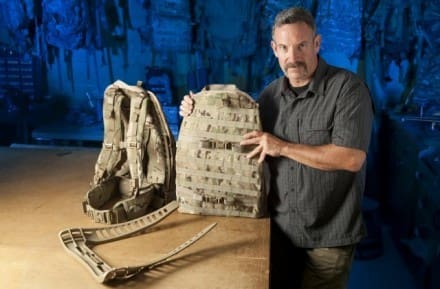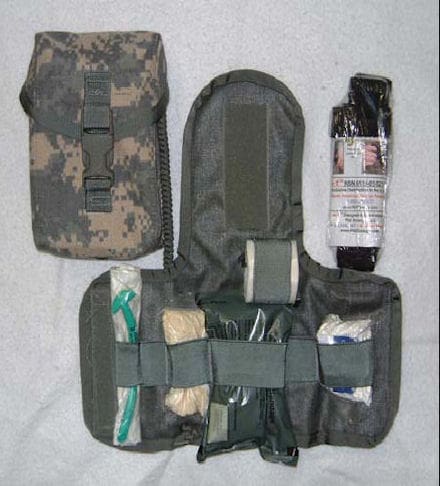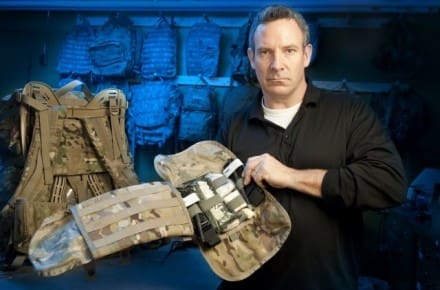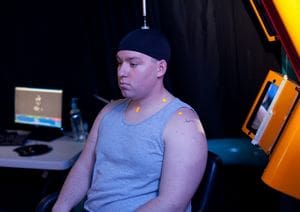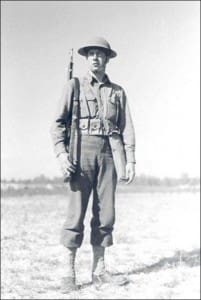 While this isn’t exactly breaking news, the fact that the Army is publicly acknowledging their efforts regarding wool is. Wool was long a mainstay of Soldier clothing. Take for example this Soldier circa 1941. He is essentially wearing the same clothing that his forebears wore in the trenches of World War I. This same gear served us well through World War II, Korea and on. Wool pieces remained in the cold weather bag up into the 90s. And then, beginning in the 60s with selected items up through early 90s, the services began to turn away from wool in favor of synthetics such as polypropylene and acrylic. As operations in Afghanistan and Iraq ramped up, the flame threat associated with Improvised Explosive Devices caused a shift to a new generation of FR performance fabrics.
While this isn’t exactly breaking news, the fact that the Army is publicly acknowledging their efforts regarding wool is. Wool was long a mainstay of Soldier clothing. Take for example this Soldier circa 1941. He is essentially wearing the same clothing that his forebears wore in the trenches of World War I. This same gear served us well through World War II, Korea and on. Wool pieces remained in the cold weather bag up into the 90s. And then, beginning in the 60s with selected items up through early 90s, the services began to turn away from wool in favor of synthetics such as polypropylene and acrylic. As operations in Afghanistan and Iraq ramped up, the flame threat associated with Improvised Explosive Devices caused a shift to a new generation of FR performance fabrics.
In recent years there has been a move to investigate the possibility of reintroducing nature’s performance fabric into the Soldier’s kit bag. Wool’s advantages, particularly of the Merino variety, are myriad.
-Warm even when wet
-Comfortable in a wide range of temperatures as well as against the skin
-Antimicrobial
-Inherently FR (No Melt, No Drip)
-Grown Naturally
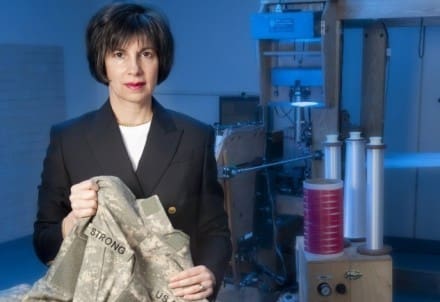
Now, according to an Army press release, Natick Soldier Research, Development, and Engineering Center has contracted for several efforts with the American Sheep Industry Association and its subsidiary, Sheep Venture Company, to develop, test and evaluate wool fabrics for combat clothing. The ASI is no slouch, with over 45 state sheep associations, all told it represents more than 82,000 sheep producers.
“We can enhance wool’s inherent properties by engineering high-performance fiber blends and fabric structures. It all begins with the wool fiber fineness, where some breeds of sheep and what they are fed directly affect the wool fiber diameter and flexibility,” said Carole Winterhalter, textile technologist for NSRDEC.
“In the military world, Natick is recognized as working on cutting-edge technologies in support of all Soldiers, Sailors, Airmen and Marines. Work done at Natick is thorough and credible,” said Mitchell Driggers, program manager for Sheep Venture Company, or SVC, and government contracting consultant of the American Sheep Industry, known as ASI.
“Natick provides the expertise of textile technologists to engineer optimized individual clothing for the field,” Winterhalter said.
In 2009 NSRDEC selected three organizations for Phase I Small Business Innovation Research contracts specifically calling for shrink-resistant treatments for wool and our friends at Propel LLC were involved in these efforts. SVC received the Phase II contract and created different wool shrink-resist techniques through chemical and enzyme-based technologies. Subsequently, the sheep and wool industry spent its own funds to install a manufacturing line with energy-efficient equipment to run the shrink treatments.
This line accommodates multiple shrink treatment methods. SVC’s washable wool line exceeded its production by more than 40 percent in the first year, and the company expects to double its production this year.
“The work done with Natick Labs is important because ASI is able to better understand the needs of all of the military services,” said Rita Samuelson, wool marketing director for ASI. “Together, we can develop products that are functional and valuable to our servicemen and women.”
There has been an impression that there isn’t enough domestic wool to go around, but the facts belie the myth. The US wool industry exports approximately 65 percent of American-grown raw and semi-processed wool to overseas markets, and 10-15 percent is used by the domestic textile industry. The rest is consumed by the US military.
The next step is engineering better performing wool blends. For example, spinning long-staple (four-inch) wool into worsted yarns with Nomex and Kevlar fibers from DuPont was done through NSRDEC and SVC for flame resistance and durability purposes.
“We believe we’ll be able to make a fabric that is much stronger with the long-staple worsted yarns,” Winterhalter said. “We’ve already demonstrated a 20 percent increase in yarn strength over the previous short-staple yarns.”
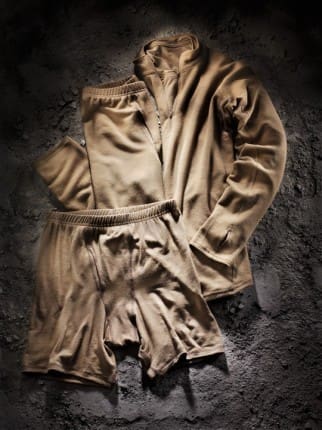
On the other hand, New Balance is out in front of this concept as well with their FR wool blend featuring FR Rayon.
“Through these different parameters, we can engineer high-tech protective clothing made from environmentally friendly natural means,” Winterhalter said. “We hope these fabrics will be used across the board for FR applications, just as the nylon/cotton blend has been the all-purpose combat uniform fabric.”
To further refine the technology, SVC was awarded a three-year contract to develop FR fabrics for the future.
“Wool does not melt or drip and has significant fire-resistant qualities, both of which can help protect Soldiers from IEDs,” Samuelson said.
The advantages of wool for the Soldier are obvious. It is truly nature’s performance fabric and when combined with other technologies, performance is further enhanced. For the Army and by extension the taxpayer, wool offers a cost advantage. Expect to see more and more companies enter the domestic wool game as they eye military business.


